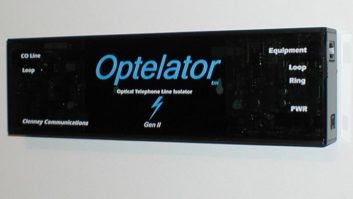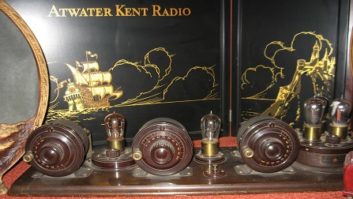(click thumbnail)Radio has been a presence in the American home and workplace from its earliest days.
This photographic print, which resides in the Library of Congress, shows a milkman tuning in during chores in 1923.
Steve Raymer of the Pavek Museum of Broadcasting identifies the radio shown as a 1921 Grebe CR-5. “The antenna is very similar to the rare Western Electric loop designed to work with their 1922 model 4A superheterodyne receiver,” he tells RW. “The only difference is that the 4A’s loop has five sides while the one in the picture has four. Everything else is identical. The design of the Western Electric loop is attributed to Carl Englund and Arthur Haddock.”
RW’s Buc Fitch notes, “Vast numbers of farms across the great isolated outback of America had no power and people would take the rechargeable radio batteries into town on ‘errand day’ and swap them for charged ones at the radio store.”
And contributor Mark Durenberger writes, “Since farmers didn’t lead frivolous lives, there would be a reason for having that unwieldy contraption in the barn, and it probably wasn’t entertainment. Many early broadcast stations began their decades of service by providing agriculture information to farmers who were otherwise disconnected from much of the world. That information included ag news, commodity prices and weather. Listening during ‘chore time’ may have been the only opportunity a farmer had to get that information.
“Once the country was ‘electrified’ and engineers developed the ‘plug-in’ radio — which early on was just a power supply directly replacing the batteries — the radio was turned on much more often. Morning hymns and meal-time inspiration and entertainment became expectations alongside the aforementioned fast-decay information.”
— Paul McLane









